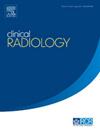CT 结肠造影报告中结肠代码解释的差异性:单中心经验。
IF 2.1
3区 医学
Q2 RADIOLOGY, NUCLEAR MEDICINE & MEDICAL IMAGING
引用次数: 0
摘要
目的:尽管用于对计算机断层扫描结肠成像(CTC)结肠检查结果进行分类的标准化摘要代码(C代码)已使用多年,但对于如何解释这些代码却没有明确的指导。本研究的目的是:(1) 确定本医院的 CTC C 代码人口统计学和报告实践;(2) 确定 CTC 报告人在使用 C 代码时的一致性:在未获得伦理批准的情况下,本在线问卷调查研究邀请了所有在 2023 年 2 月 22 日至 2023 年 3 月 5 日期间在我院报告 CTC 的放射科医生、放射科报告技师和放射科实习生。共设计了 20 个问题,其中 9 个问题涉及人口统计学和报告实践,其后是 11 个病例情景。使用弗莱斯卡帕(Fleiss kappa)和平均配对同意度计算了参与者之间对病例情景的同意度:18/21(85.7%)名参与者完成了问卷调查。大多数受访者表示 "总是 "使用 C 代码(17/18,94.4%)。11 个案例情景的总体一致性尚可[0.39 (95% CI 0.38-0.41)],平均配对一致性为 46.9%。CTC 经验≤ 1000 次的报告者与经验> 1000 次的报告者(P<0.001)、报告息肉变小的报告者与未报告息肉变小的报告者(P<0.001)、病例情景充分的报告者与病例情景不充分的报告者(P<0.001)之间的一致性明显更高:这项问卷调查研究表明,本机构对 C 代码的解释存在差异。我们建议进行一次全国性调查,以确定这是否是一个普遍问题,并为英国肠癌筛查计划的正式实施指南的制定提供信息。本文章由计算机程序翻译,如有差异,请以英文原文为准。
The variability in interpretation of colonic codes in CT colonography reporting: a single-centre experience
Aim
Although standardised summary codes to classify colonic findings (C-codes) on computed tomography colonography (CTC) have been used for several years, there is no clear guidance on how these codes should be interpreted. The aims of this study were to (1) establish CTC C-code demographics and reporting practice at our hospital and (2) determine the agreement between CTC reporters when using C-codes.
Materials and Methods
Waiving ethical approval, this online questionnaire study invited all radiologists, reporting radiographers and radiology trainees who reported CTC at our hospital between 22/02/2023 and 05/03/2023. In total 20 questions were developed with 9 questions on demographics and reporting practice followed by 11 case scenarios. Agreement between participants for the case scenarios was calculated using Fleiss kappa and mean pairwise agreement.
Results
18/21 (85.7%) of participants completed the questionnaire. The majority of respondents reported using C-codes “always” (17/18, 94.4%). Overall agreement for the 11 case scenarios was fair [0.39 (95% CI 0.38–0.41)] with a mean pairwise agreement of 46.9%. Agreement was significantly greater for reporters with ≤ 1000 than > 1000 CTC experience (p < 0.001), those who reported diminutive polyps than those who did not (p < 0.001), and adequate than inadequate case scenarios (p < 0.001).
Conclusion
This questionnaire study demonstrates variation with how C-codes are interpreted at our institution. We suggest a national survey to determine whether this is a widespread issue and to inform development of formal implementation guidance within the UK Bowel Cancer Screening Programme.
求助全文
通过发布文献求助,成功后即可免费获取论文全文。
去求助
来源期刊

Clinical radiology
医学-核医学
CiteScore
4.70
自引率
3.80%
发文量
528
审稿时长
76 days
期刊介绍:
Clinical Radiology is published by Elsevier on behalf of The Royal College of Radiologists. Clinical Radiology is an International Journal bringing you original research, editorials and review articles on all aspects of diagnostic imaging, including:
• Computed tomography
• Magnetic resonance imaging
• Ultrasonography
• Digital radiology
• Interventional radiology
• Radiography
• Nuclear medicine
Papers on radiological protection, quality assurance, audit in radiology and matters relating to radiological training and education are also included. In addition, each issue contains correspondence, book reviews and notices of forthcoming events.
 求助内容:
求助内容: 应助结果提醒方式:
应助结果提醒方式:


